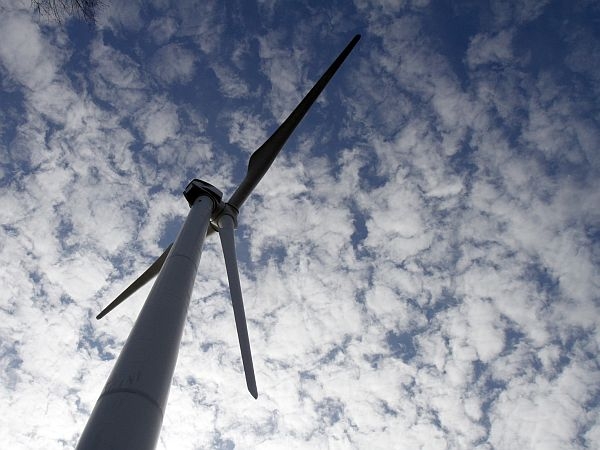 (Host) The Shumlin administration has put the finishing touches on an energy plan that calls on Vermont to meet 90 percent of its energy needs with renewable sources by 2050.
(Host) The Shumlin administration has put the finishing touches on an energy plan that calls on Vermont to meet 90 percent of its energy needs with renewable sources by 2050.
The plan stresses efficiency as well as renewable energy development. And it foresees drastic cuts in fossil fuel use for transportation and home heating.
VPR’s John Dillon reports.
(Dillon) Renewable energy now supplies about 25 percent of Vermont’s electrical energy needs.
Public Service Commissioner Elizabeth Miller says getting to 90 percent for all energy sectors is doable, although it will require big changes in transportation and home heating.
(Miller) "So moving to 90 percent, although significant, is certainly something Vermont has a history of being able to do and can move forward on, particularly if we spend the same level of hard work on transportation, heating efficiency in the coming decades as we’ve spent on efficiency in the electric sector and electric renewable policy in the past decades."
(Dillon) Governor Peter Shumlin sees a day when many more Vermonters drive plug-in electric vehicles powered by renewable sources.
(Shumlin) "And we can do it in Vermont. It’s a jobs creator, huge economic opportunities for us. And it’s a moral imperative."
(Dillon) But the governor is not a big fan of burning wood in large power plants to generate electricity. He says wood, in the form of pellets, is better used for heating homes and businesses.
(Shumlin) "Of all the renewables, the one I’m least enthusiastic about is large biomass. I think that the most questions should be asked there. We should be building wind and burning small biomass in our homes. Large biomass, the larger it is, the more questions should be asked."
(Dillon) The Legislature will now take parts of the plan and transform it into policies that encourage more energy efficiency and renewable generation.
However, state property – such as state-owned mountaintops – will probably not see large wind energy developments. The plan says state land can be used – where appropriate – for renewable projects. Agency of Natural Resources Secretary Deb Markowitz explains these will probably be smaller generators, such as a recent wind turbine erected on state forest on Burke Mountain.
(Markowitz) "In the right circumstance, state government is appropriate for renewable energy projects. By and large it’s smaller-scale, community kinds of projects like we saw on Burke Mountain. That was really a terrific project. It was a good partnership. So I could see other types of proposals of that nature going forward."
(Dillon) The plan does not include the Vermont Yankee nuclear plant as part of the state’s energy future. The Shumlin administration wants the plant closed when its federal license expires next spring.
Guy Page of the Vermont Energy Partnership – a coalition that wants Yankee re-licensed – says it doesn’t make sense to rule out the nuclear plan from Vermont’s energy mix.
(Page) "If they want to do something about climate change and emissions, and fine particulate matter in the air and all kinds of air pollution, the last thing we should be doing is transitioning away from a non-emissions base load provider."
(Dillon) Entergy, the company that owns Vermont Yankee, has challenged the state in federal court.
A ruling is expected by the end of the year.
For VPR News, I’m John Dillon in Montpelier.